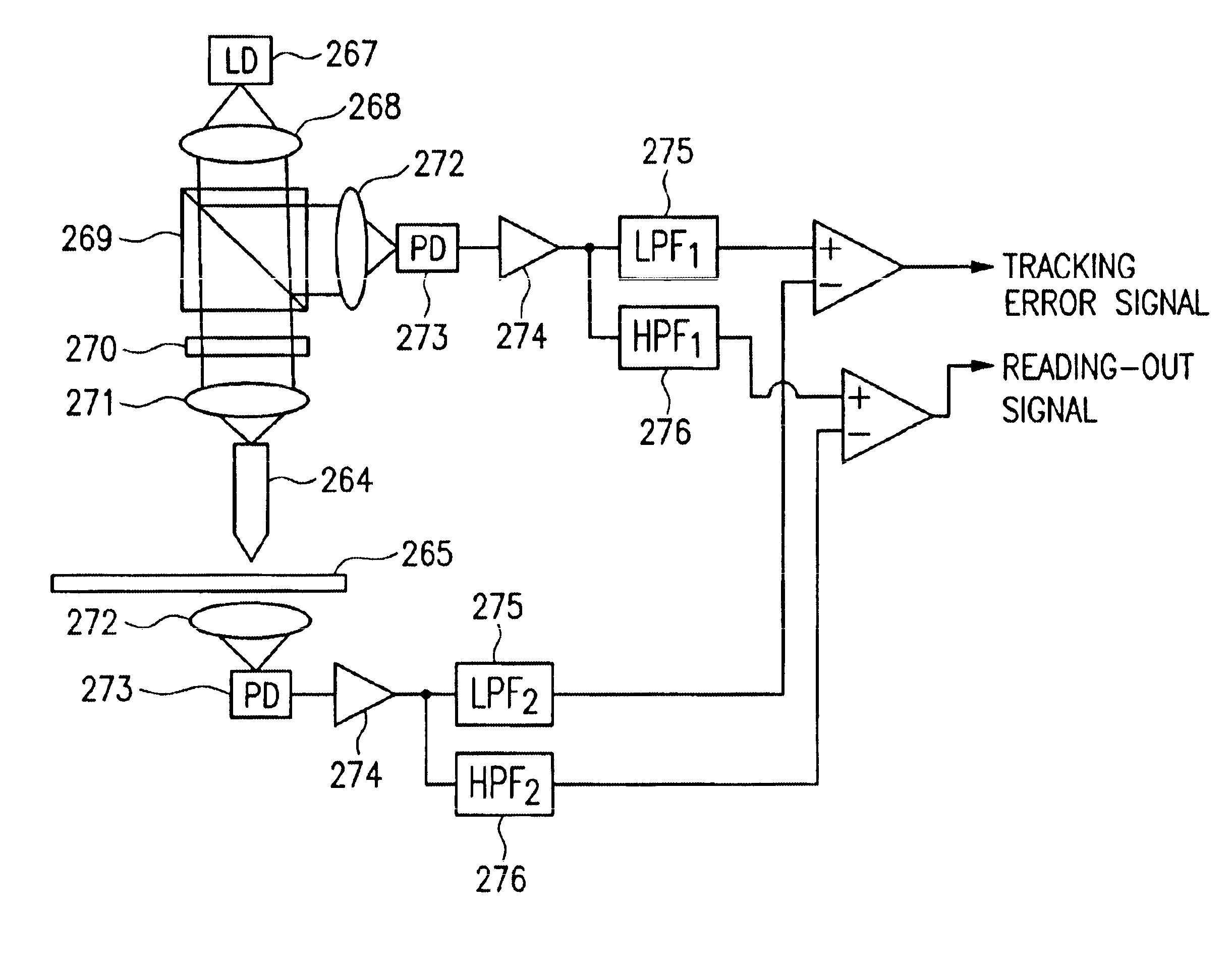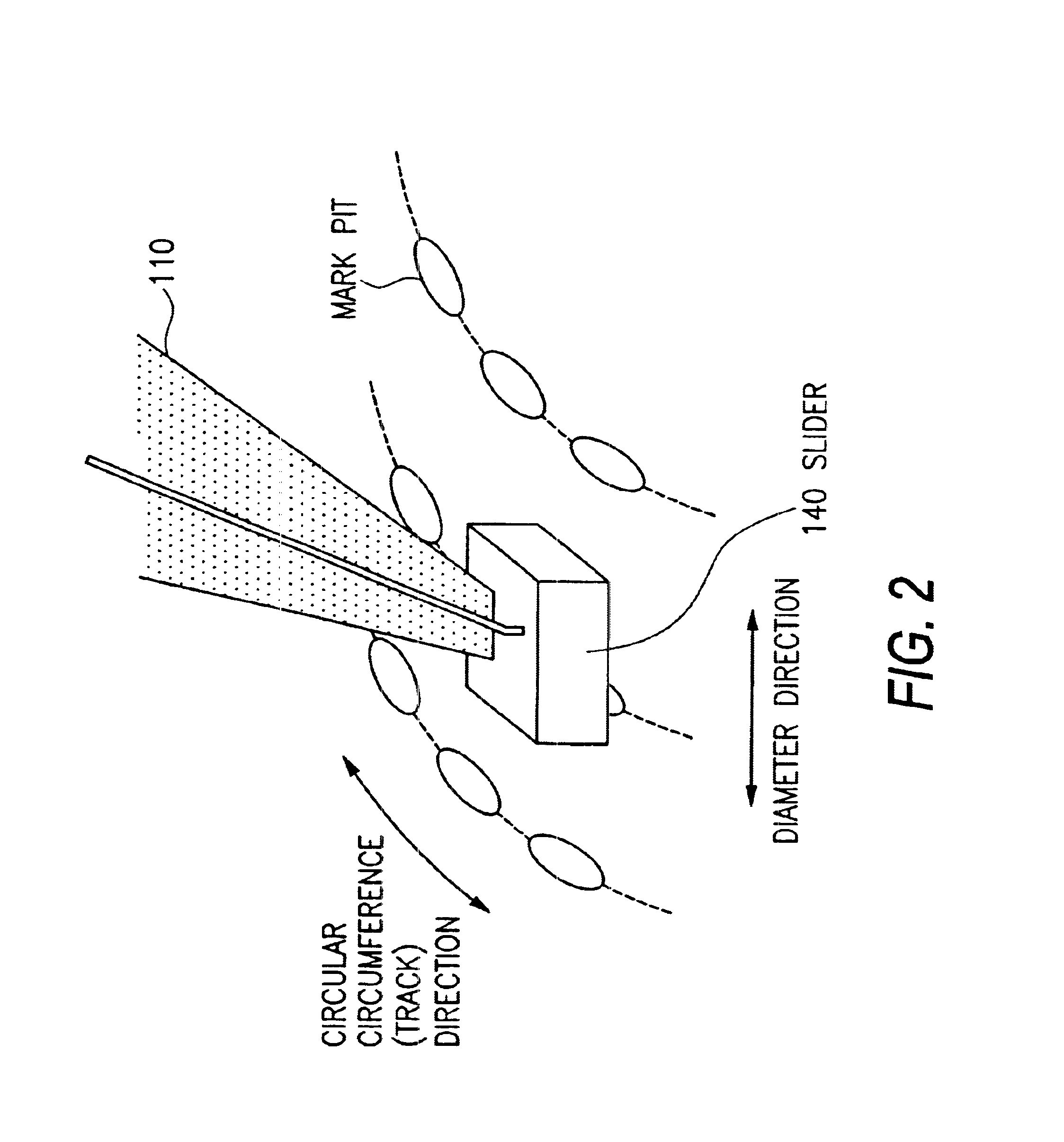Optical information recording and reproducing apparatus
a technology of optical information and reproducing apparatus, which is applied in the direction of data recording, disposition/mounting of heads, instruments, etc., can solve the problems of long time consumed till the time of recording, the distance between the optical probe and the recording medium cannot be kept constant, and it is difficult to obtain the predetermined recording density
- Summary
- Abstract
- Description
- Claims
- Application Information
AI Technical Summary
Problems solved by technology
Method used
Image
Examples
first embodiment
MODIFICATION OF FIRST EMBODIMENT
FIG. 5 is a view for explaining the modification of the first embodiment according to the present invention.
In FIG. 5, the control operation can be done until 1 / 3 of the distance between the probe and the fixed electrode(s). However, if the distance exceed 1 / 3 thereof, the electrostatic attractive force becomes larger than the return spring force due to the resilient deformation, and at the result the probe turns out to be attracted to either one of the fixed electrodes. At this time, since the voltage is applied across the probe and the fixed electrode(s), short-circuiting occurs therebetween and thereby both of them are destroyed or fused to each other by the action of the Joule heat. In order to prevent the occurrence of the above matter, as shown in FIG. 5, plural land pad electrodes are arranged at the places nearer to the probe than to the fixed electrode(s). In such structure, the electric potential of the land pad electrodes is made equal to t...
second embodiment
FIG. 6 is a view for explaining the second embodiment of the present invention.
Since the electrostatic attractive force is inversely proportional to the square of the distance, that is prominently affected by the distance. Consequently, the probe moves in the direction of the line segment of minimizing the distance between the surface of the probe and the surface of the fixes electrode. Since the probe has to be moved in the tracking direction, that is, the direction perpendicular to the direction of the data row arrangement on the recording medium, it is necessary to set the shape and arrangement of the fixed electrode such that the above-mentioned direction coincides to the direction of the line segment of minimizing the above-mentioned distance between the surface of the probe and that of the fixed electrode.
In FIG. 6, a point a on the surface of the probe electrode is the point nearest to the fixed electrode(s) 181. The arrow marks represent a direction of minimized distance bet...
first modification
OF SECOND EMBODIMENT
FIG. 7 is a view for explaining the first modification of the second embodiment shown in FIG. 6.
In FIG. 7, fixed electrodes 182 is made in the shape of semicircular cylinder. The point a of the probe electrode is the point (a-point) on the probe surface which is nearest to the fixed electrode(s) 182. The arrow marks represent the direction of minimizing the distance between the fixed electrode(s) 182 and the probe. In such structure, the probe can be surely moved in that direction. Consequently, the operation of tracking can be done stably.
PUM
| Property | Measurement | Unit |
|---|---|---|
| voltage Va | aaaaa | aaaaa |
| distance | aaaaa | aaaaa |
| distance | aaaaa | aaaaa |
Abstract
Description
Claims
Application Information
 Login to View More
Login to View More - R&D
- Intellectual Property
- Life Sciences
- Materials
- Tech Scout
- Unparalleled Data Quality
- Higher Quality Content
- 60% Fewer Hallucinations
Browse by: Latest US Patents, China's latest patents, Technical Efficacy Thesaurus, Application Domain, Technology Topic, Popular Technical Reports.
© 2025 PatSnap. All rights reserved.Legal|Privacy policy|Modern Slavery Act Transparency Statement|Sitemap|About US| Contact US: help@patsnap.com



